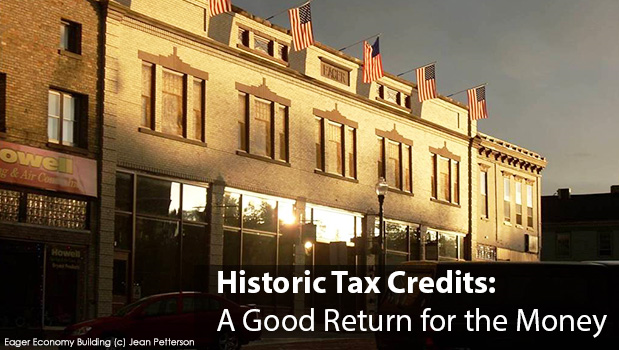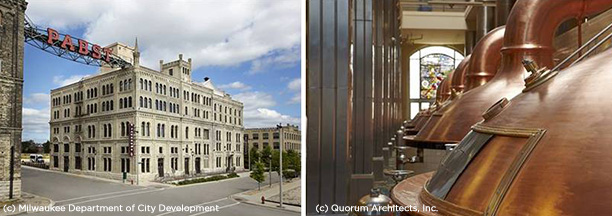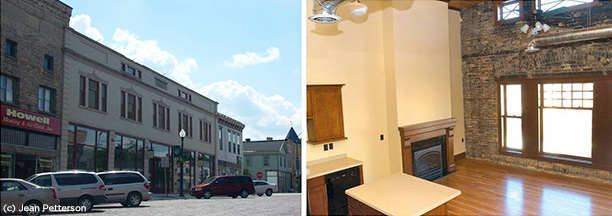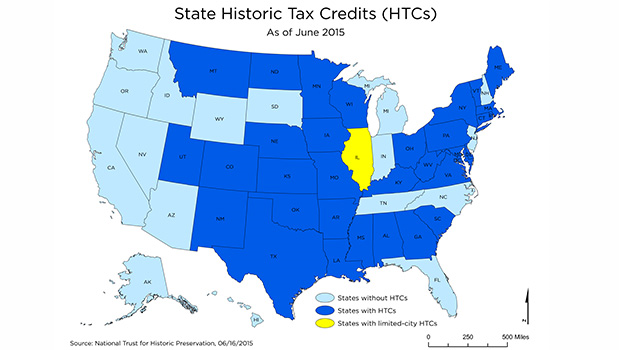Announcing the Science Discovery on Main Street Grant Recipients
Main Street America is thrilled to announce the 12 Science Discovery on Main Street grant program recipients.
Aprenda soluciones basadas en datos para retos complejos en el Taller de Transformación Comunitaria 2025 en Columbia y Hartsville, Carolina del Sur, del 13al15 de octubre.
Más información
Marion, Iowa © Tasha Sams
We work in collaboration with thousands of local partners and grassroots leaders across the nation who share our commitment to advancing shared prosperity, creating resilient economies, and improving quality of life.

Emporia, Kansas © Emporia Main Street
Made up of small towns, mid-sized communities, and urban commercial districts, the thousands of organizations, individuals, volunteers, and local leaders that make up Main Street America™ represent the broad diversity that makes this country so unique.

Chicago, Illinois © Main Street America
Looking for strategies and tools to support you in your work? Delve into the Main Street Resource Center and explore a wide range of resources including our extensive Knowledge Hub, professional development opportunities, field service offerings, advocacy support, and more!

Waterloo, Iowa © Main Street Waterloo
Your one-stop-shop for all the latest stories, news, events, and opportunities – including grants and funding programs – across Main Street.

Kendall Whittier — Tulsa, Oklahoma © Kendall Whittier Main Street
Join us in our work to advance shared prosperity, create strong economies, and improve quality of life in downtowns and neighborhood commercial districts.

Those who work on Main Street know about measuring the “Return on Investment” otherwise known as ROI. We measure the effectiveness of our last marketing campaign, weigh whether the investment in new street lights outweigh the political capital spent, and debate if the thousands of volunteer hours are worth the impacts created by a one-day event.
Similarly, many state legislators across the country have recently weighed — or are currently considering — the Return on Investment (ROI) of state tax incentives that enable the rehabilitation of historic buildings.
When I recently reviewed the body of research done on state historic tax credit (HTC) programs, I found something interesting about their ROI. All of the studies showed that the HTCs pay back the state’s investment over a period of time. And this payback happens in two phases.
Studies of Maryland, Ohio, and Wisconsin’s HTC programs estimate that each state receives $.34 , $.31 , and $.40 cents respectively for every dollar invested in a historic tax credit during the construction period. In other words, between 30-40% of the state’s investment is paid back before the building is placed into service and the credit issued.
The remainder of the state’s investment is returned after the formerly abandoned or under-utilized building is placed into service. For example, a recent Wisconsin study estimated the state would be paid back fully within seven years for all of the HTC projects enabled by state tax credits in 2014.
Rehabilitations aided by the 33 state historic tax credit programs also increase local property tax revenues like the new Brewhouse Inn and Suites which increased Milwaukee’s assessed values by a factor of ten – from $1.4 million to $14.3 million. Conference attendees can see this remarkable renovation first-hand during the next Main Streets Conference in Milwaukee.

The Gorman Company renovated an 1882 former brewery in Milwaukee, Wisconsin and turned it into the Brewhouse Inn and Suites. Approximately 111 jobs were created during the rehabilitation. Today, the 90 room extended-stay hotel employees 28 people (18 FT/10PT), while the restaurant/bar has 51 employees (26 FT/ 25 PT) . Before the renovation, the building was assessed at $1.4 million and after the rehabilitation, the assessed value rose to $14.3 million.
But even smaller rehabilitations projects like the renovation of a former commercial building at 5-9 E. Main Street in Evansville, Wisconsin (pop. 5124) can dramatically increased a property’s assessed value. In the case of the renovation of the former Eager Economy Store (c. 1935) the assessed value rose from $189,100 to $1,311,300.

Mayor Sandy Decker, former chairwoman of the Evansville Historic Preservation Commission, said the Eager Economy’s rehabilitation had a catalytic effect, spurring the renovation of an 1870 Greek Revival retail building two doors down, at 15 E.Main Street. She said that these tax credit projects in turn became “the tipping point downtown,” driving three more historic improvement projects on the same block.
A taskforce appointed by Maryland Governor Bob Ehrlich, for example, found that for every dollar of tax credit invested by the state, the state receives “an average return of approximately $1.02 during the first year after a project’s completion, and $3.31 within five years after project completion.”
It is this type of information that led 6 states (Minnesota, Illinois, Pennsylvania, Texas, Alabama and Nebraska) since 2010 to put in place state tax credits. Of these states, Texas does not tax income and instead applies the credit against a franchise tax. Other states that do not tax income are now examining this model.
The positive ROI information has also led three states to expand their historic tax credit programs — in 2013, Wisconsin increased their rehabilitation tax credit from 5% to 20%; in 2014, Colorado replaced its historic tax credit program with an expanded version with $10 million cap, and in 2015, Georgia added $25 million annually to its existing program to help fund projects with over $300,000 in qualified rehabilitation expenses. This year Arkansas extended their program another 10 years — from 2017 through 2027 — and sensibly limited the credit per property to every 24 months.
But philosophically, some legislators remain opposed to any type of tax credits. In Indiana, for example, state legislators voted to replace the state’s miniscule historic tax credit program ($450,000 annual statewide cap for commercial credits and $250,000 for owner-occupied residences) with a $1.2 million grant program to go into effect in 2017. Virginia was successful in illustrating the critical need for their state’s tax credit and the two bills (HB 2167 and HB 2109) that would have placed a sunset on the effective program were amended and tabled respectively.
Wanting to attract private investment dollars for redevelopment, other states are considering putting in place a historic tax credit. While a bill to create a historic tax credit failed in Arizona, in Oregon, the Senate Finance and Revenue Committee voted SB 565 “The Main Street Revitalization Act” out of committee. The bill would provide a 25% rebate for certified rehabilitation of historic commercial buildings and would require a minimum investment of $10,000. (Video Courtesy of Restore Oregon)
After letting their historic tax credit programs expire at the end of December, the North Carolina House included a state HTC in their budget. Restoring the historic tax credit has been a key initiative of Governor McCroy and the HTC program is included in the Governor’s proposed budget. The grassroots effort to reinstate the tax credit has been widespread with mayors, Main Streets, and business owners all across the state speaking out about the positive impacts the tax credit made in their community.
Other states are continuing their HTC programs but with caveats.
On June 15, the Ohio Senate majority caucus pulled language that would have placed a moratorium on Ohio’s historic tax credit starting July 1. An outcry from Main Street and preservation organizations and other members of the redevelopment community, demonstrated the widespread use of the credit in rehabilitating communities of all sizes. A new amendment to the Senate’s budget now calls for a study to weigh the pros and cons of replacing the $60 million historic tax credit program with a grant program instead.
Earlier this week, the Louisiana legislature approved HB 387 that extends the state’s historic tax credit to January 1, 2022, maintains the 25% credit for qualified expenditures made before January. 1, 2018, and then lowers the credit to 20% after January 1, 2018. Governor Jindal now has 20 days to consider the approved bill. Unfortunately, if HB 387 is approved, the historic tax credit for homeowners will also be reduced – with the overall cap lowered from $10 million to $7.2 million, the maximum credit reduced from $25,000 to $18,500, and the percentage of qualifying expenses reduced as well.

As Charles Dickens so eloquently wrote … “It was the best of times, it was the worst of times…” That is why those of us concerned about our Main Streets need to get involved in advocacy campaigns around historic tax credits. We know first-hand the difference a formerly abandoned building makes when it’s rehabilitated, filled with new businesses and residents and put back on the property tax rolls. Legislators know small business owners that thrive are adept at measuring ROI and respond positively to their well thought-out arguments for incentives.
The U.S. Senate Finance Committee has six working groups that are currently looking at ways to reform the nation’s tax code and it remains to be seen if the federal historic tax credit will remain in their proposal.
Outreach from Main Streets across the country is helping to explain the critical need for these tax incentives in revitalizing our downtowns. But we can’t rest until all 50 states offer these types of incentives and the federal credit remains a permanent part of the tax code.
As Tax Credit Specialist in the National Trust's Government Relations and Policy department, Renee Kuhlman has helped protect, improve, and put in place state historic tax credits since 2004.